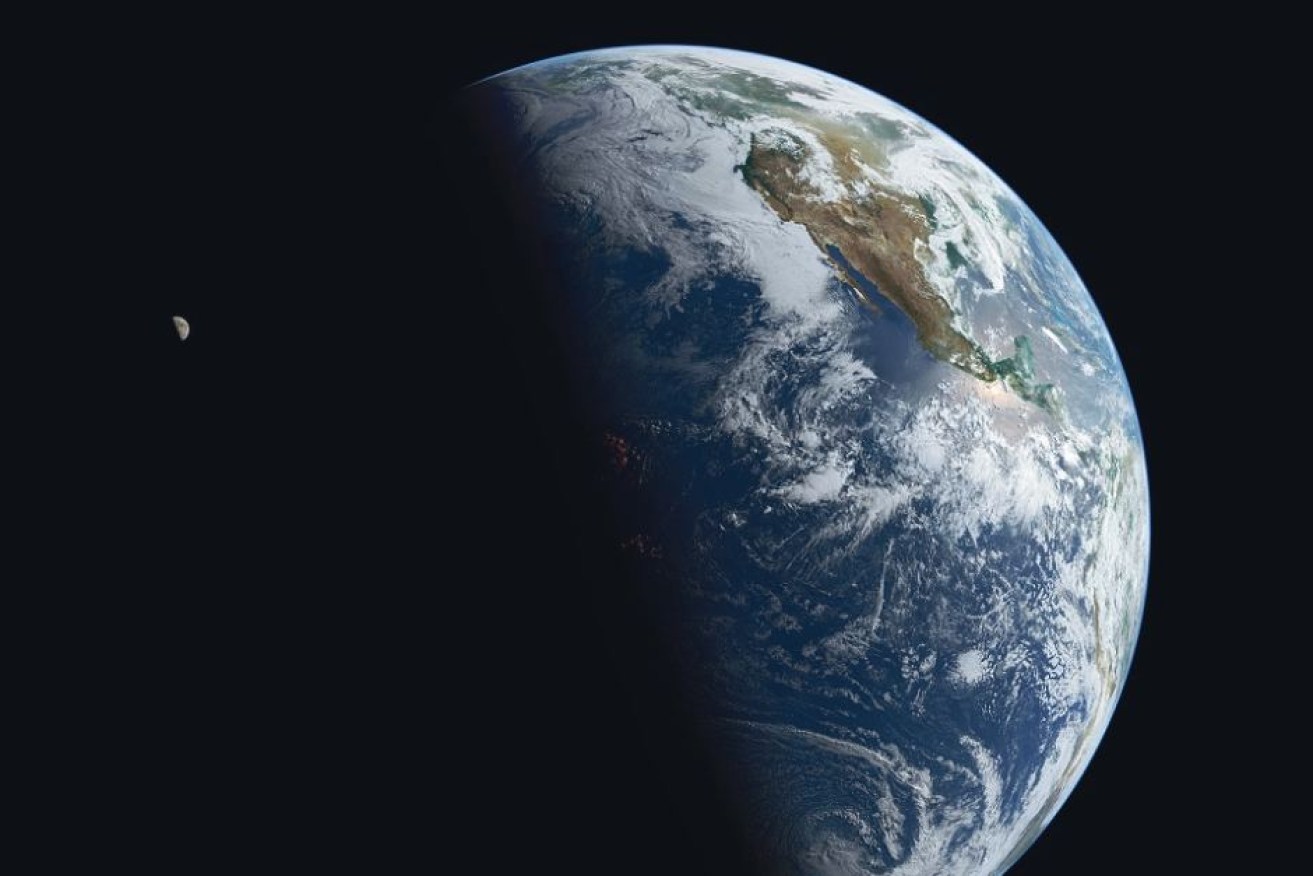We’ve used a year’s worth of Earth’s resources in seven months

At current rates, we use the resources of 1.7 Earths each year, according to the Global Footprint Network. Photo: NASA
There is a date every year when the world’s resource bank goes into overdraft.
This year, Earth Overshoot Day is marked globally on August 2. For the rest of year we’re in the burning red.
It’s the point when the amount of natural resources – think trees, fish and water – humanity takes from the Earth reaches the total that can be regenerated over the entire year.
It’s when the amount of carbon emitted reaches the amount the forests and oceans are able to absorb.
This year it happened in seven months, according to the Global Footprint Network.
That’s the earliest it’s ever been and it’s no thanks to Australia.

Infographic: If everyone lived like Australians, we would need 5.2 Earths for every year of life. Supplied: Global Footprint Network
If every country in the world lived like Australia, Earth Overshoot Day would have been on March 12.
If you reckon that’s not your debt, you can calculate how you are personally tracking via the Footprint calculator and then compare it to the national date.
We were at a break-even point in 1971 and even had a surplus before that (the UN started collecting this data in 1961).
Since then, the date has been creeping further from December — we’re demanding more from the Earth while reducing its capacity to regenerate.
The Global Footprint Network calculates each year’s overshoot day.
The equation has four main factors:
- How much we consume
- How efficiently products are made
- How many of us there are
- How much nature’s ecosystems are able to produce
According to their calculations, we’re using the resources of 1.7 planets every year.
To rein in our ecological spending, we’d need to push Earth Overshoot Day back 4.5 days each year to be living within our single-planet means by 2050.
In a story for The Conversation, tutor in Sustainability Science at the University of Newcastle Bonnie McBain said it’s a confusing concept, since we continue to live, while using more and more resources.
She used this analogy:
“Imagine a bathtub full of water, with the tap running and the plug out at the same time.
“It is possible for more water to flow out of the bath than into it for some time without the water in the tub running out.
“This is because the significant store of water in the bath acts like a buffer.
“The same goes for nature.”
Dr McBain told the ABC there were many interweaving factors at play.
In her research, which compared future ecological footprints with research about planetary boundaries, they found that our global cropping footprint is likely to exceed the planetary boundary for land clearing between 2025 and 2035.
Yep. It could be less than 10 years away.

A look at overshoot days by country. Australia is earliest among the countries with available data, following Luxembourg and Qatar. Photo: Global Footprint Network
“If you have what we’ve got slow incremental changes in things so the planetary boundary, that’s informed by that group of research, they were saying we can’t have more than a 15 per cent increase in cropping areas … of the global ice-free land surface,” Dr McBain said.
“Generally, we don’t want more than 50 percent of land turned into crop land.
“The trend is going that way so that’s the concern.
“We haven’t reached it yet but it’s likely that it won’t be long before that is reached.
“This is our opportunity to heed that warning and introduce policy … and that’s the point of the research.”








